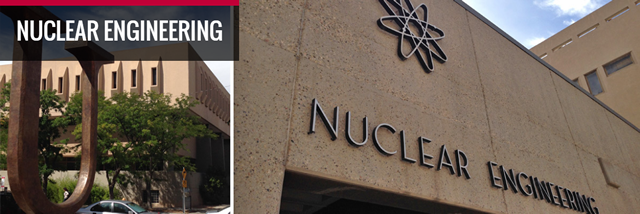
Nuclear Engineering ETDs
Publication Date
1-30-2013
Abstract
Owing to their inherent complexity, stochastic neutron transport problems are often examined by either using highly simplified models to make solutions more accessible, or at the cost of significant computational effort for problems demanding higher accuracy than such simplified models afford. In this work, solutions to stochastic transport equations of varying complexity are developed to examine a particular quantity of interest, the neutron survival probability. Using these solutions, the behavior of the survival probability is characterized throughout a wide range of parameters to better inform expectations as the complexity of the problem is increased. First, the survival probability is modeled in an infinite medium. This provides insight into the relationship between the survival probability and the passage of survival time, the effective multiplication factor of the system, and the number of factorial moments of fission multiplicity preserved in the equation. A steady-state diffusion equation is then solved semi-analytically in a one-dimensional slab, expanding understanding of the behavior of the survival probability and providing a benchmark for other space-dependent solutions. Additional steady-state solutions are produced by recognizing that the survival probability is well-approximated by the first eigenfunction of the linear portion of the equation. Not only is strong agreement observed with the semi-analytical solution, extension to other geometries is made accessible and the impact that varying geometry has on the survival probability is demonstrated. Finally, solutions to the time and space-dependent survival probability diffusion equation are computed using an eigenfunction expansion technique. By comparison to the available semi-analytical steady-state solutions, as well as the known ``initial"" condition, the eigenfunction expansion technique demonstrates the capacity to produce solutions of arbitrary accuracy throughout the available parameter space. Extension to other geometries and multi-dimensional problems is performed, showing the broad capabilities of the technique as well as exploring facets of its performance. Additionally, a linear stability analysis of the equilibrium solution produced by the eigenfunction expansion technique is performed, rigorously demonstrating the stability of the associated solutions.
Document Type
Thesis
Language
English
Degree Name
Nuclear Engineering
Level of Degree
Masters
Department Name
Nuclear Engineering
First Committee Member (Chair)
Busch, Robert D
Second Committee Member
Cooper, Gary W
Recommended Citation
Kamm, Ryan J.. "Eigenfunction expansion of the time and space-dependent neutron survival probability equation." (2013). https://digitalrepository.unm.edu/ne_etds/27


